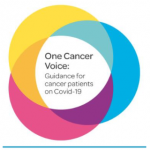Pottery painting with new friends

In February we organised our first Little brainstrust meet up in Edinburgh. We all enjoyed a laugh and got busy (and a bit messy!) hand painting some pottery together.
Our meet ups are designed to give families respite from their daily caring roles to create memories with their loved ones.
“Our meet ups are invaluable for families when they are going through some difficult times. The smiles on children’s faces when they can forget about their worries is priceless. With the support from brain tumour specialist healthcare professionals we want to reach more people living with a brain tumour. We know a brain tumour diagnosis can be isolating for families, we are here to bridge that gap and bring our community together.”
Khadijha, Support Specialist for Children and Families at brainstrust
With events being unfortunately off the calendar for the foreseeable future, we are focusing on the ways that we can support you remotely.
- We will be running virtual meetups and webinars covering topics we know are important to you – keep an eye on our social channels for updates.
- Book a coaching call or drop your support specialist an email. Coaching can be vital in this time of uncertainty to help you navigate your ‘new’ normal. Click here to email Helen, Jane, Jodie, Carol or Khadijha.
- We are regularly uploading new information onto our website for people with a brain tumour. Read our existing Know Hows, and look for new arrivals here.
- Our Facebook community has over 2,500 members and is a welcoming, confidential and supportive space that is thriving and full of relevant and useful conversations.
- We also offer a peer support service
Peer support
 Here at brainstrust we don’t underestimate the value to talking to someone who has had a similar experience. Our community overwhelmingly report that a brain tumour diagnosis is frightening, isolating and bewildering. Talking to someone who has already been through the same experience can help to reduce the isolation, help to make sense of what is happening, and reduce the fear of the unknown.
Here at brainstrust we don’t underestimate the value to talking to someone who has had a similar experience. Our community overwhelmingly report that a brain tumour diagnosis is frightening, isolating and bewildering. Talking to someone who has already been through the same experience can help to reduce the isolation, help to make sense of what is happening, and reduce the fear of the unknown.





